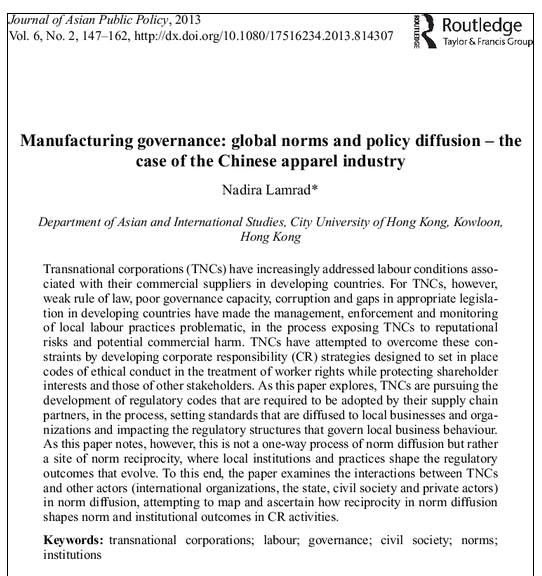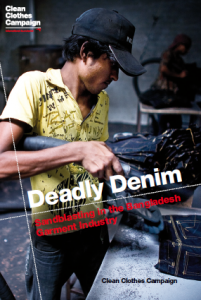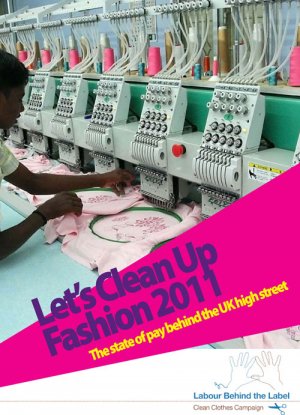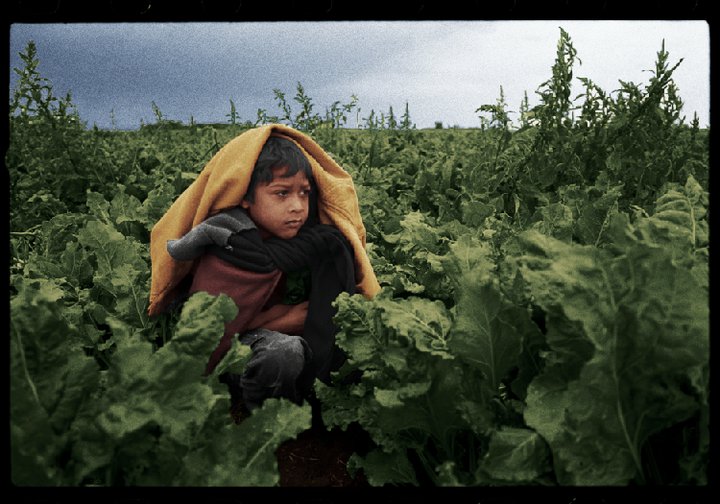
Killer Jeans. A campaign by Labour Behind the Label and the Clean Clothes Campaign.
The sandblasting saga continues as a completely unnecessary denim distressing technique persists. This despite the fact that around 40 brands banned the use of sandblasting in their supply chains as part of the successful campaign spearheaded by the Clean Clothes Campaign and Labour Behind the Label.
What’s the big deal with sandblasting?
If sandblasting is done under sub par conditions, it almost inevitably results in a lung disease called silicosis. This is not a new disease. It has been well documented and is completely preventable with good ventilation and safety equipment. The disease develops when people inhale crystalline silica, a basic component of sand, which then causes lung inflammation and scarring potentially leading to death. In an article published in Occupational Medicine, Akgun et.al. (2006) investigated the prevalence of silicosis in Turkey’s denim blasting industry and concluded that
“The case series we present here is alarming in that it demonstrates that silicosis, a long-recognized but preventable occupational disease can still occur in previously unrecognized occupations. The occupation of sandblasting denim jeans is relatively new and has developed as a result of changes in fashion in developed countries and the demand for worn-looking jeans. Tragically, this condition has occurred in very young men with an average of only 3 years in this particular occupation. Lack of awareness of the condition and the dangers of silica and inadequate protective measures have already had fatal results. Silicosis is a well-known disease and its clinical forms have been well characterized. The classical form of silicosis usually follows one or more decades of exposure. However, in contrast to the chronic or classical form of silicosis, the accelerated and acute forms result from intense exposure to high levels of respirable dust that contain a significant proportion of silica, and these develop after much shorter duration.”
I highly encourage you to read this short journal article to grasp the seriousness and the severity of this disease particularly when it comes to textile production.
So what else is new?
Last night, Students and Scholars Against Corporate Misbehaviour (SACOM), the Clean Clothes Campaign (CCC), War on Want and the IHLO (ITUC/GUF Hong Kong Liaison Office) released an incriminating report entitled Breathless for Blue Jeans: Health Hazards in China’s Denim Factories, which uncovers the continued use of sandblasting in China’s denim manufacturing industry. The investigation by SACOM was limited to six denim factories in Guangdong province (just across the border from Hong Kong) which some may think is not a representative sample. However, it is important to keep in mind that China’s textile manufacturing industry is concentrated in two areas, one of which is the Pearl River Delta which primarily covers Guangdong province, a hub for denim – around 50% of global production (CCC et.al. 2013. p. 10). Xintang county alone is responsible for “over 260 million pairs of jeans a year, equivalent to 60% of China’s total jeans production, and 40% of the jeans sold in the US each year (Greenpeace 2010).” The factories investigated include two major garment producers with thousands of workers; one of which supplies around 4% of denim sold in the US (CCC et.al. 2013, p. 10). The other 4 factories include a smaller production facility and three subcontractors.
The report points out some alarming trends. Although the prevalence of sandblasting has declined between 2009 and 2012, thanks in part to increased consumer awareness and united action on the brand side, promises to eliminate sandblasting have been matched by evasive maneuvers on the manufacturing side:
“One factory reportedly continued its sandblasting on the sly, surreptitiously dismantling the sandblasting machinery and hiding it in advance of inspections…Factories also concealed their sandblasting units behind locked doors and had increased security for these units, limiting access solely to the sandblasters (p. 11).”
In interviews, SACOM found that workers were ordered to dismantle and hide sandblasting equipment in advance of factory inspections and audits, which was then reassembled once auditors exit the premises (p. 13). Furthermore, at one factory, younger workers began to reject sandblasting positions. The management responded by offering a higher wage for the position (p. 12). Therefore, although some workers are aware of the health risks associated with sandblasting they still take the job to secure a higher salary (p. 13). SACOM also outlines the emergence of new techniques designed to replicate the effects of sandblasting such as chemical spraying, bleaching and manual polishing and sanding. These techniques are themselves risky especially when performed without adequate safety equipment (pp. 14-18).

A worker manually polishing jeans in a Chinese factory. Justin Jin/SACOM. (CCC et.al. 2013)
SACOM’s findings highlight the importance of unannounced audits with off-site worker interviews in rooting out evasive activities in the supply chain. The report also reminds us that it is essential to remain vigilant when it comes to occupational health and safety especially when new techniques are adopted. Finally, there is a real need to instill a culture of safety beyond the first tier of production and into the lower tiers of the supply chain. This is a major problem in production. For example, look at the photo on page 17 of the report. See the worker smoking his cigarette while spraying the jeans with potassium permanganate? Often times, even when workers are trained to use safety equipment, they still ignore these requirements because the equipment either hampers their production speed, or gets in the way, or is uncomfortable, or they’re not used to it etc… Training is not enough. There has to be a concerted effort by all stakeholders involved to change the way people think about workplace safety and the costs associated with it. It is truly sad that evasion and the expectation that it will happen is an industry norm, leading to supply chain relationships built on suspicion and policing. It’s time for systemic change that aims to transform norms and values related to workplace safety. The view that workers are dispensable production inputs is antiquated, to say the least.
References:
Akgun, M., Mirici, A., Ucar, E. Y., Kantarci, M., Araz, O., & Gorguner, M. (2006). Silicosis in Turkish denim sandblasters. Occupational Medicine, 56(8), 554-558.
Clean Clothes Campaign, SACOM, IHLO, & War on Want. (2013). Breathless for Blue Jeans: Health hazards in China’s denim factories.
Greenpeace. (2010). The Dirty Secret Behind Jeans and Bras.












